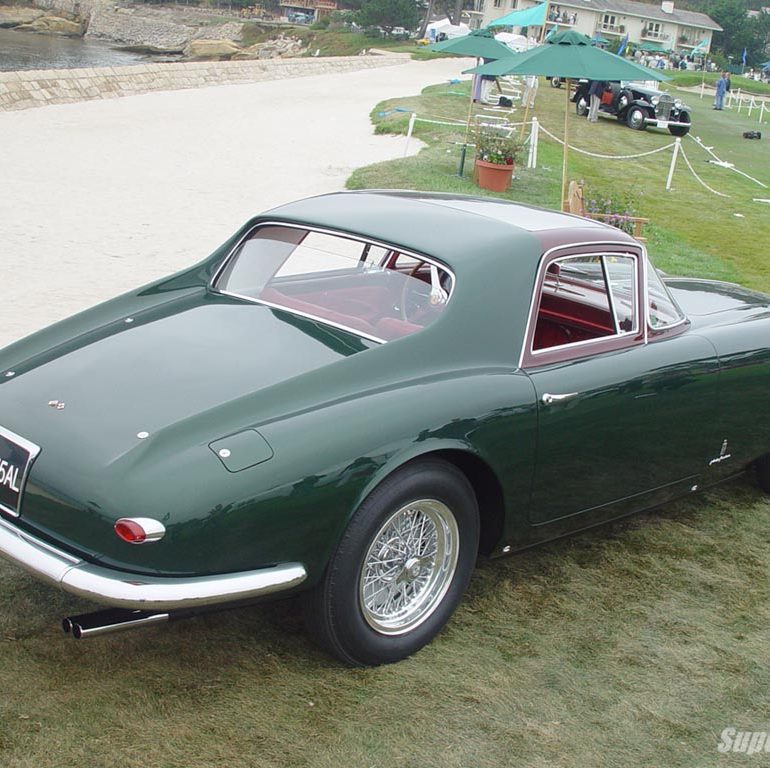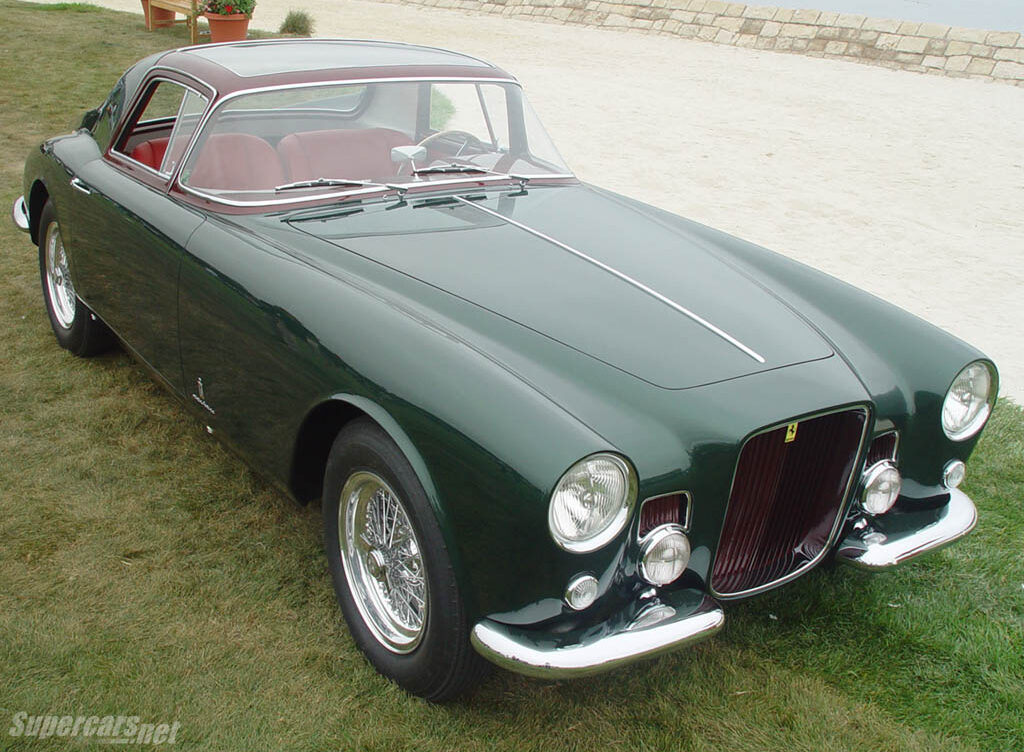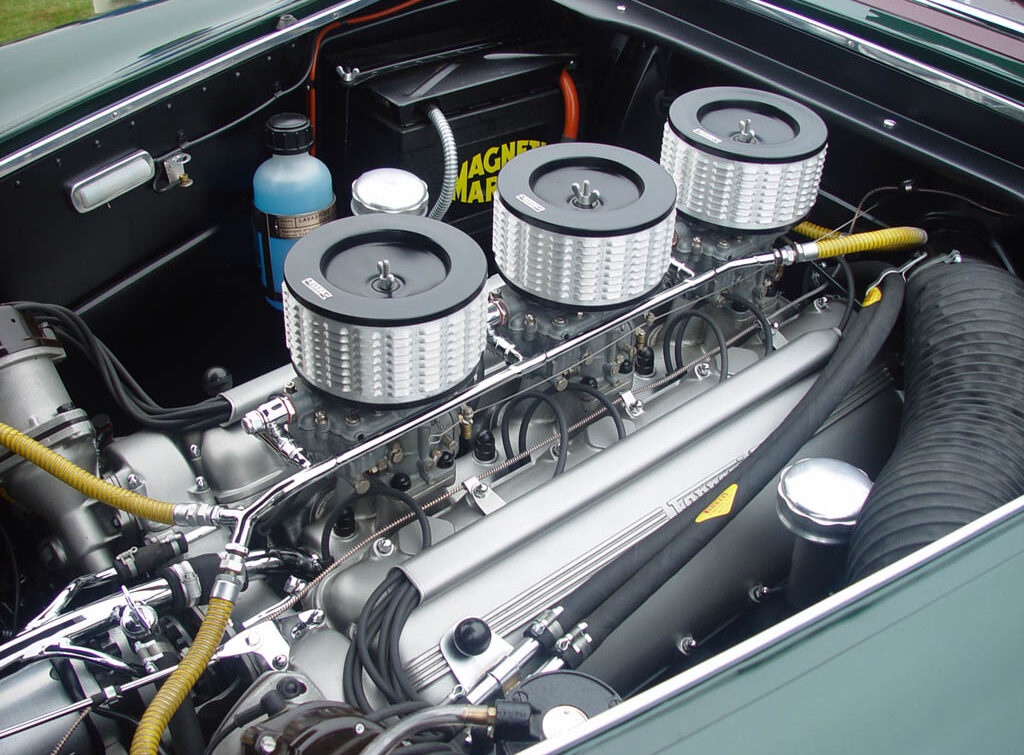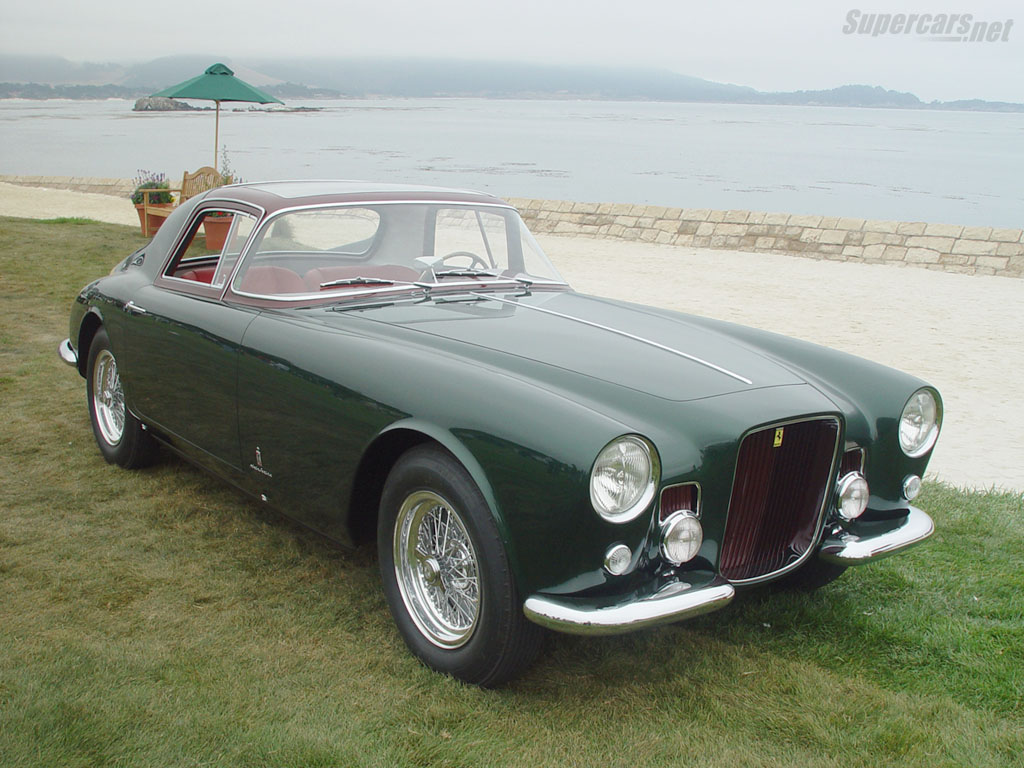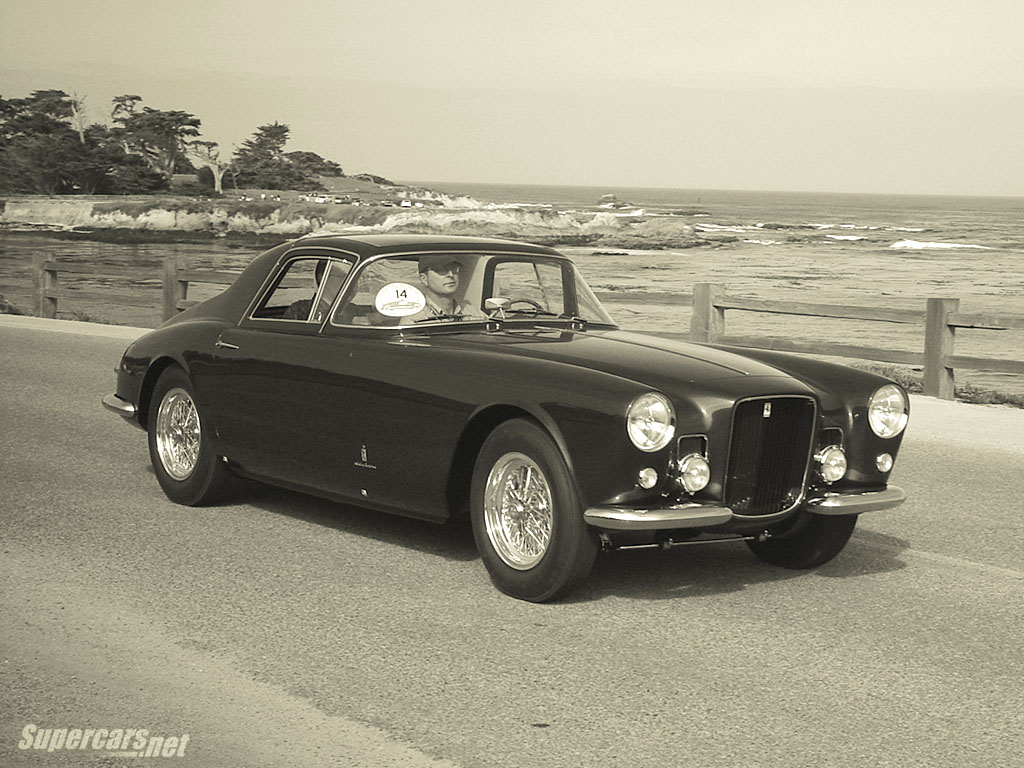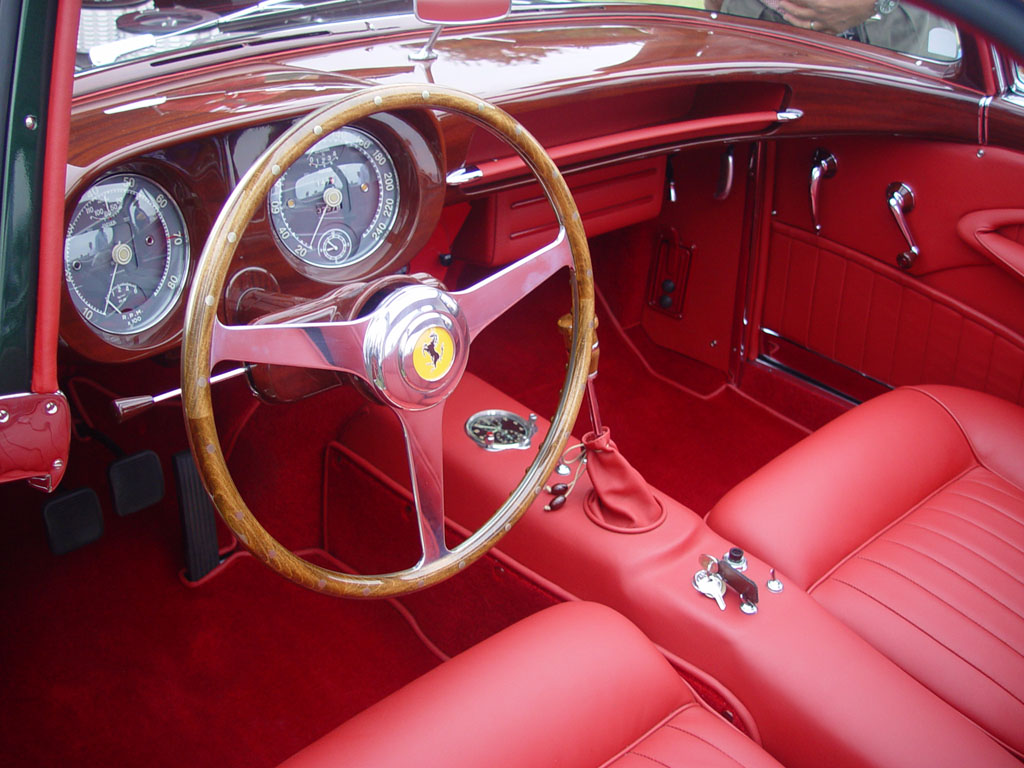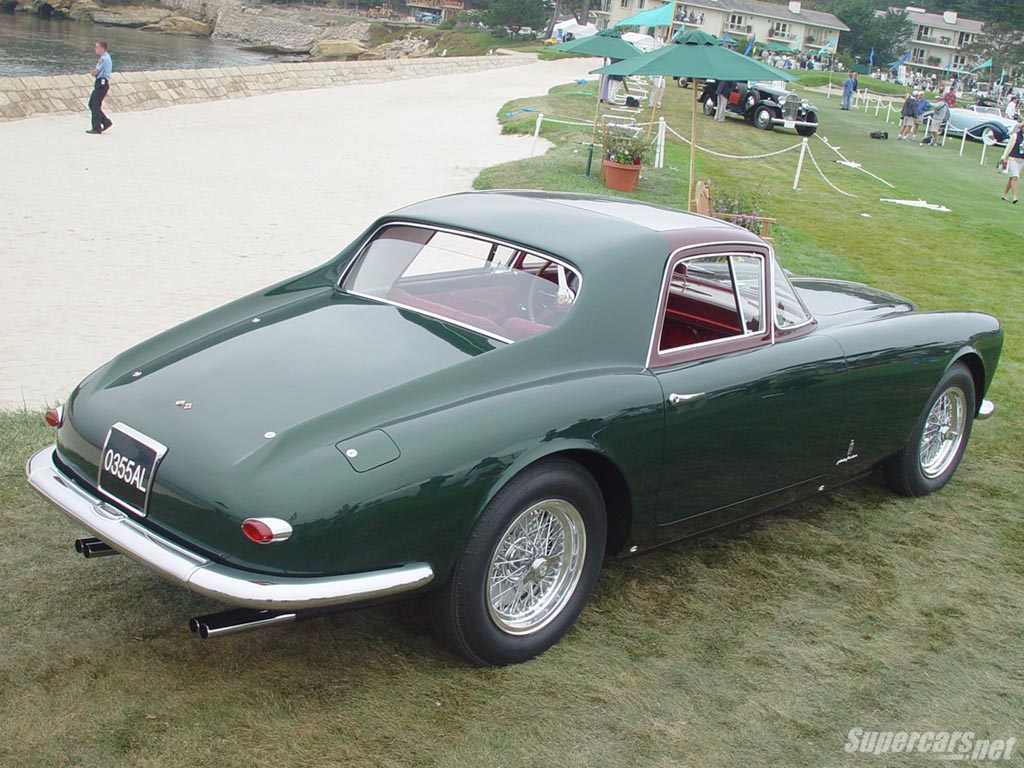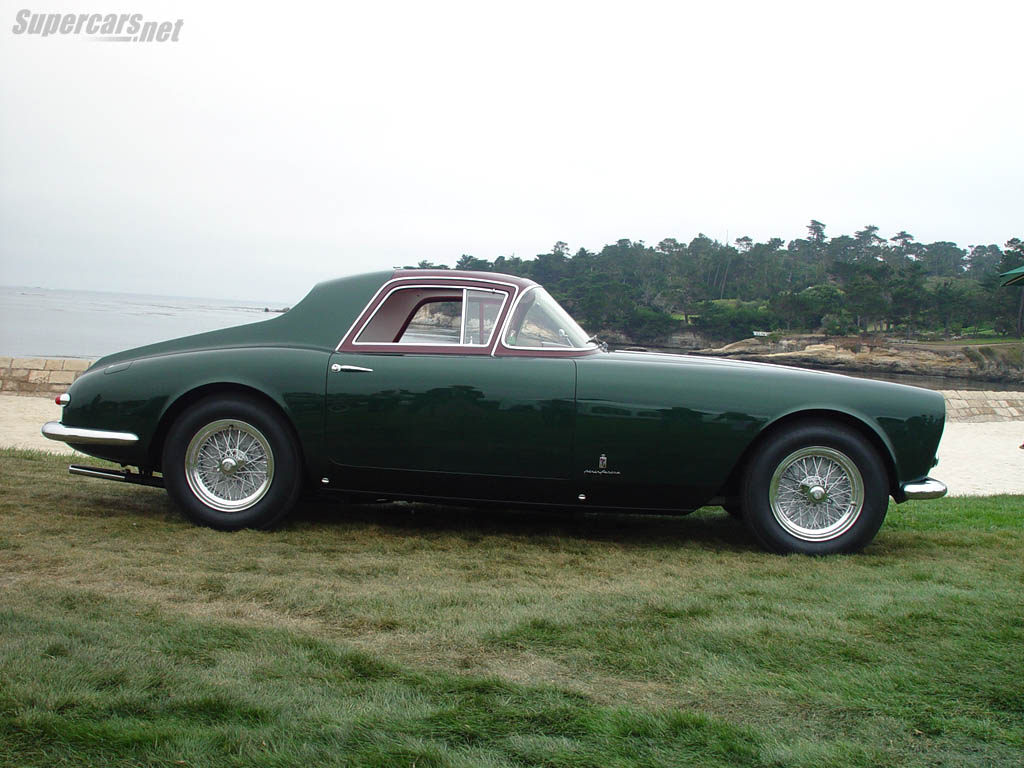Ferrari 375 America Coupé Speciale
During an era when advertising was in its infancy, and the only symbols on a car were it’s team name or national color, many racing teams had to rely on wealthy lineage or product sales to finance a racing program. Examining Ferrari, it is clear the company sold race-bred products to finance their very ambitious sporting goals and that is how the company excelled
The earliest Ferrari designed for the road was the Tipo 166 Inter, a tuned down version of the 166 which experienced success on the track. From the 166 forward, Ferrari designed progressively larger cars, moving to the 195, then 212, until a larger engine design was necessary.
It was the 340 America which introduced the Aurelio Lampredi-designed V12, sometimes call the long block, to the Ferrari’s production chassis. This was also the first car to bear the America designation, which hinted at the it’s intended market, but isn’t where all were sold. Progress continued on the 340 line, and it quickly became the 342 before reaching the specification of our feature car, the 375.
See full 1955 Ferrari 375 America Coupé Speciale Gallery here
375 America
In the early fifties, Ferrari began large series production with the 250 Europa. This let the large displacement road cars, such as the 342 and 375 America, enter more exclusive and luxurious production. This explains why our 375 America Pinin Farina Coupe Speciale is one of only ten in the limited series.
Ferrari’s 375 chassis was similar to all the sports car chassis made during the period. The basic formula included a tubular-frame ladder chassis, double wishbones upfront and a live axle in the rear with hydraulic drum brakes at all four corners. As released alongside the 250 Europa, the 375 didn’t break any engineering trends aside from having the largest engine Ferrari had ever made.
The Aurelio Lampredi-designed V12 was first used in some of Ferrari’s most fierce sports prototypes. Its large displacement offered the necessary power to win the 24 hours of Le Mans in the glorious 375 Plus. However, not all Lampredi engines were used for competition, and instead some were used to power the Ferrari’s most exclusive grand touring cars. Starting with a the 340 displacement bored from 80mm to 84mm, the 375 America offered around 300 horsepower depending upon carburetion and compression. This 4505cc engine, helped most the 375s reach the 150mph mark, a remarkable figure for the period.
Agnelli’s 375 Speciale
The initial design language set out for the 375 was not unlike the 250 Europa, having a large egg crate grill and conservatively rounded fenders. However Gianni Agnelli, the boss at Fiat, wanted a Ferrari that was distinctly different. His car, known as the Agnelli 375, clearly broke the traditional 166 and 212 styling trend and is not instantly recognizable as a Ferrari.
Both Ferrari and Pininfarina, who were just entering a mutual beneficial relationship, wanted to impress each other and the Fiat boss with the creation of the Agnelli 375. The demanding build, resulted in an timeless and striking Ferrari, one that could only be made by the combined efforts of Ferrari, Pinin Farina and Angelli.
As the last 375 America, chassis 0355AL was built to impress, and it did so upon release at the Turin Salon in April 1955. Pinin Farina took extra time to ensure Agnelli’s Ferrari was a finely detailed as styled. Unique appointments included a flat, roll-down rear window, large glass sunroof, twin rear flying buttresses, two tone paint, leaning a-pillars and most distinctive of all, a horizontal grill unlike any other Ferrari.
On Ferrari’s side, 0355AL’s chassis and engine was far from uniform. Starting with the engine, the bore was increased, to offer a total displacement of 4.9 liters, making this the first road-going 4.9 Ferrari. To accommodate the large engine, 42mm Weber DCZ3 carburetors were fitted. Refinements to the chassis included 16 inch Borrani wheels which opened up space for complementary competition drum brakes. Ferrari went as far to chrome some of the suspension components!
After a brief five year ownership, Agnelli sold his 375 and thus a deep lineage of owners got to experience the best grand touring Ferrari had to offer. By the 1990s the car had a suffered cosmetically, but remained largely original, being driven and maintained. In 2002 a comprehensive restoration returned the 375 back to its Turin Show configuration. The first place award achieved with a perfect 100 point score at the Pebble Beach Concours is a good measure of how dedicated the restoration staff was at Motion Products.
Pictures
See full 1955 Ferrari 375 America Coupé Speciale Gallery here
Specs & Performance
| submitted by | Richard Owen |
| type | One Of |
| engine | Lampredi V12 |
| position | Front Longitudunal |
| aspiration | Natural |
| valvetrain | SOHC, 2 Valves per CYl |
| fuel feed | Tripple 42mm Weber DCZ3 Carburettors |
| displacement | 4961 cc / 302.7 in³ |
| bore | 88 mm / 3.46 in |
| stroke | 64 mm / 2.52 in |
| power | 246.1 kw / 330 bhp @ 6500 rpm |
| specific output | 66.52 bhp per litre |
| bhp/weight | 242.47 bhp per tonne |
| torque | 433.86 nm / 320 ft lbs @ 4500 rpm |
| redline | 6500 |
| body / frame | Steel Body over Pressed Steel Frame |
| driven wheels | RWD |
| front tires | 16×6.0 |
| rear tires | 16×6.0 |
| front brakes | Competition Drums |
| rear brakes | Competition Drums |
| steering | Worm & Wheel |
| f suspension | Double Wishbones w/Coip Springs, Anti-Roll Bar |
| r suspension | Live Axle w/Leaf Springs, Anti-Roll Bar. |
| curb weight | 1361 kg / 3000 lbs |
| wheelbase | 2800 mm / 110.2 in |
| front track | 1325 mm / 52.2 in |
| rear track | 1320 mm / 52.0 in |
| transmission | 4-Speed Manual |
| top speed | ~241.4 kph / 150.0 mph |


